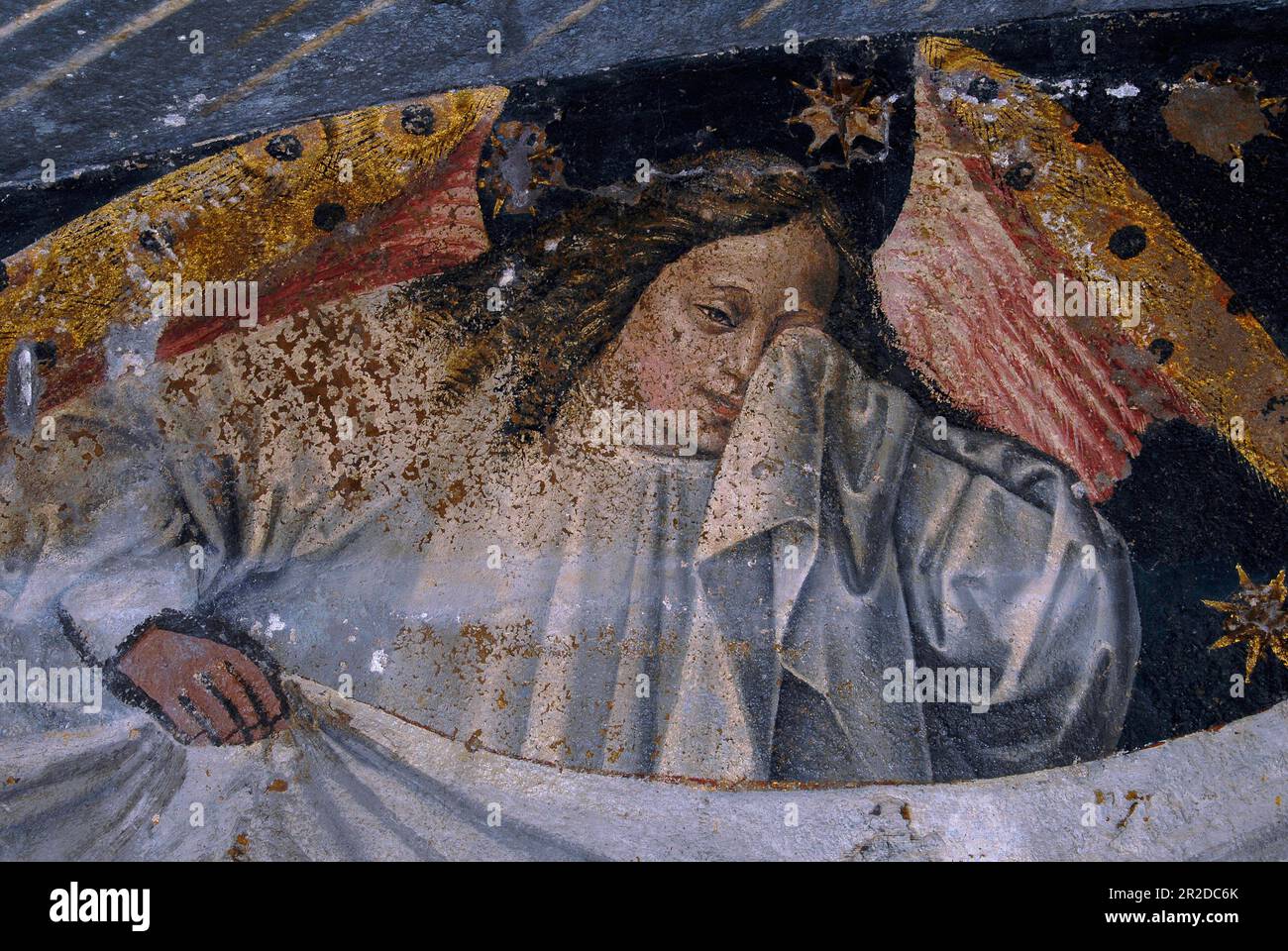Weeping angel with golden wings and gold-flecked hair. Renaissance fresco in the Cathédrale St-Lazare d’Autun (Cathedral of Saint Lazarus of Autun), founded circa 1120 AD at Autun, Saône-et-Loire, Bourgogne-Franche-Comté, France.

Image details
Contributor:
Terence Kerr / Alamy Stock PhotoImage ID:
2R2DC6KFile size:
28.7 MB (2.7 MB Compressed download)Releases:
Model - no | Property - noDo I need a release?Dimensions:
3872 x 2592 px | 32.8 x 21.9 cm | 12.9 x 8.6 inches | 300dpiDate taken:
27 August 2007Location:
Cathédrale St-Lazare d’Autun,Autun, Saône-et-Loire, Bourgogne-Franche-Comté, FranceMore information:
This image could have imperfections as it’s either historical or reportage.
Autun, Saône-et-Loire, Bourgogne-Franche-Comté, France: a weeping angel uses a cloth to dry tears from her eyes in this Renaissance fresco in the Roman Catholic Cathédrale St-Lazare d’Autun (Cathedral of Saint Lazarus of Autun), which was founded in Romanesque architectural style in about 1120 AD. The cathedral was built to accommodate large numbers of believers travelling to Vezelay on the pilgrimage route to Santiago de Compostela in Spain, and to Autun itself to venerate the supposed relics of Lazarus of Bethany, the follower of Jesus whom Christ is said to have restored to life four days after his death. In fact, the relics Autun had obtained from Marseilles, about 150 years earlier, were those of Lazarus of Aix, the 5th century Bishop of Aix-en-Provence. Autun Cathedral is today regarded as among of the finest examples of Romanesque art and architecture, not just in Burgundy, but in the whole of France. It is particularly known for its sculpted doorways, tympanums and capitals, believed to be the work of the French Romanesque sculptor Gislebertus, Giselbertus of Ghiselbertus, who flourished in the early 12th century and whose expressive carvings at Autun, Cluny, Vezelay and elsewhere are among the most original and distinctive religious artworks of that period. D0354.A4222